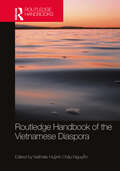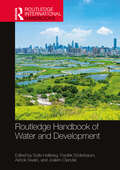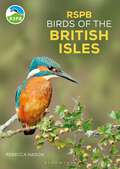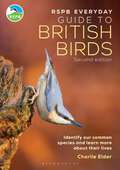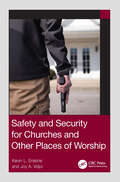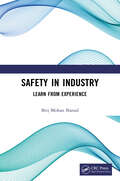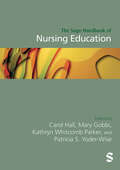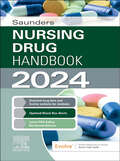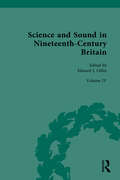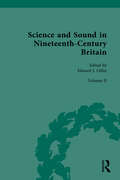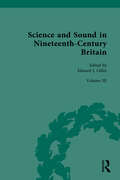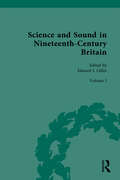- Table View
- List View
Routledge Handbook of Sports and Exercise Therapy (Routledge International Handbooks)
by Keith WardThe Routledge Handbook of Sports and Exercise Therapy is a methodically detailed, authoritative, contemporaneous and practical reference source for all those involved in sports and exercise therapy, whether students, established practitioners, educators or researchers. This comprehensive handbook cohesively presents foundational subjects and introduces principles and applications to support the development and practice of sports and exercise therapists.These are presented alongside new essential and evolving topic areas. Such a blend of fundamental underpinning and applied and experiential practical guidance gives this handbook a real sense of relevancy, and a contribution which can help to consolidate the positioning of sports and exercise therapists as key practitioners in an advancing landscape of health, exercise, sport, research and education. The handbook has been produced to create a seamless reference source for readers, but each of its chapters are also designed to be stand-alone presentations in their own right. The following areas are covered: Learning and teaching Evidence-based practice Anatomy and physiology Pathology of injuries Health and safety Clinical assessment Therapeutic modalities Injury rehabilitation Sports and exercise as medicine Sports and exercise nutrition Sports and exercise psychology Professionalism and ethics Structural and cultural competency Sideline sports injury management Management of regional injury conditions Case studies in sports and exercise therapy Employability and career development The handbook is comprehensively referenced and multi-authored. Its design incorporates numerous photographs, figures, tables and detailed sample document templates. It can be considered as an essential and topical resource for anyone involved in sports and exercise therapy, whether in their first year as an undergraduate or already working in professional practice.
Routledge Handbook of Sports and Exercise Therapy (Routledge International Handbooks)
by Keith WardThe Routledge Handbook of Sports and Exercise Therapy is a methodically detailed, authoritative, contemporaneous and practical reference source for all those involved in sports and exercise therapy, whether students, established practitioners, educators or researchers. This comprehensive handbook cohesively presents foundational subjects and introduces principles and applications to support the development and practice of sports and exercise therapists.These are presented alongside new essential and evolving topic areas. Such a blend of fundamental underpinning and applied and experiential practical guidance gives this handbook a real sense of relevancy, and a contribution which can help to consolidate the positioning of sports and exercise therapists as key practitioners in an advancing landscape of health, exercise, sport, research and education. The handbook has been produced to create a seamless reference source for readers, but each of its chapters are also designed to be stand-alone presentations in their own right. The following areas are covered: Learning and teaching Evidence-based practice Anatomy and physiology Pathology of injuries Health and safety Clinical assessment Therapeutic modalities Injury rehabilitation Sports and exercise as medicine Sports and exercise nutrition Sports and exercise psychology Professionalism and ethics Structural and cultural competency Sideline sports injury management Management of regional injury conditions Case studies in sports and exercise therapy Employability and career development The handbook is comprehensively referenced and multi-authored. Its design incorporates numerous photographs, figures, tables and detailed sample document templates. It can be considered as an essential and topical resource for anyone involved in sports and exercise therapy, whether in their first year as an undergraduate or already working in professional practice.
Routledge Handbook of the Vietnamese Diaspora
by Nathalie Huỳnh Châu NguyễnThe Routledge Handbook of the Vietnamese Diaspora presents a comprehensive overview and analysis of Vietnamese migrations and diasporas, including the post-1975 diaspora, one of the most significant and highly visible diasporas of the late twentieth century.This handbook delves into the processes of Vietnamese migration and highlights the variety of Vietnamese diasporic journeys, trajectories and communities as well as the richness and depth of Vietnamese diasporic literary and cultural production. The contributions across the fields of history, anthropology, sociology, literary studies, film studies and cultural studies point to the diversity of approaches relating to scholarship on Vietnamese diasporas.The handbook is structured in five parts: Colonial legacies Refugees, histories and communities Migrant workers, international students and mobilities Literary and cultural production Diasporas and negotiations Offering multiple cutting-edge interpretations, representations and reconstructions of diaspora and the diasporic experience, this first reference work of the Vietnamese diaspora will be an invaluable tool for students and researchers in the fields of Asian Studies, Asian American Studies, Ethnic Studies, Refugee Studies, Transnational Studies and Migration and Diaspora Studies.
Routledge Handbook of the Vietnamese Diaspora
The Routledge Handbook of the Vietnamese Diaspora presents a comprehensive overview and analysis of Vietnamese migrations and diasporas, including the post-1975 diaspora, one of the most significant and highly visible diasporas of the late twentieth century.This handbook delves into the processes of Vietnamese migration and highlights the variety of Vietnamese diasporic journeys, trajectories and communities as well as the richness and depth of Vietnamese diasporic literary and cultural production. The contributions across the fields of history, anthropology, sociology, literary studies, film studies and cultural studies point to the diversity of approaches relating to scholarship on Vietnamese diasporas.The handbook is structured in five parts: Colonial legacies Refugees, histories and communities Migrant workers, international students and mobilities Literary and cultural production Diasporas and negotiations Offering multiple cutting-edge interpretations, representations and reconstructions of diaspora and the diasporic experience, this first reference work of the Vietnamese diaspora will be an invaluable tool for students and researchers in the fields of Asian Studies, Asian American Studies, Ethnic Studies, Refugee Studies, Transnational Studies and Migration and Diaspora Studies.
Routledge Handbook of Water and Development (Routledge International Handbooks)
Water is essential for human life and at the centre of political, economic, and socio-cultural development. This Routledge Handbook of Water and Development offers a systematic, wide-ranging, and state-of-the-art guide to the diverse links between water and development across the globe. It is organized into four parts: Part I explores the most significant theories and approaches to the relationship between water and development. Part II consists of carefully selected in-depth case studies, revealing how water utilization and management are deeply intertwined with historical development paths and economic and socio-cultural structures. Part III analyses the role of governance in the management of water and development. Part IV covers the most urgent themes and issues pertaining to water and development in the contemporary world, ranging from climate change and water stress to agriculture and migration. The 32 chapters by leading experts are meant to stimulate researchers and students in a wide range of disciplines in the social and natural sciences, including Geography, Environmental Studies, Development Studies, and Political Science. The Handbook will also be of great value to policymakers and practitioners.
Routledge Handbook of Water and Development (Routledge International Handbooks)
by Sofie Hellberg Fredrik Söderbaum Ashok Swain Joakim ÖjendalWater is essential for human life and at the centre of political, economic, and socio-cultural development. This Routledge Handbook of Water and Development offers a systematic, wide-ranging, and state-of-the-art guide to the diverse links between water and development across the globe. It is organized into four parts: Part I explores the most significant theories and approaches to the relationship between water and development. Part II consists of carefully selected in-depth case studies, revealing how water utilization and management are deeply intertwined with historical development paths and economic and socio-cultural structures. Part III analyses the role of governance in the management of water and development. Part IV covers the most urgent themes and issues pertaining to water and development in the contemporary world, ranging from climate change and water stress to agriculture and migration. The 32 chapters by leading experts are meant to stimulate researchers and students in a wide range of disciplines in the social and natural sciences, including Geography, Environmental Studies, Development Studies, and Political Science. The Handbook will also be of great value to policymakers and practitioners.
Routledge Handbook on Arab Cinema
Building on a growing body of literature, this Handbook provides an up-to-date and authoritative survey of Arab cinema.The collection includes contributions from academics and filmmakers from across the Arab region, Europe, and North America, and fills a gap in media studies by examining the entire Arab region, rather than focusing on one country or theme. The Handbook also sheds light on the heterogeneity of Arab filmmaking not only within the Arab region, but also globally, within diasporic communities. It is split into six parts: Part 1 provides an overview of each sub-region in the Arab world, including a chapter on Arab animation films. Parts 2, 3, and 4 address topical themes, encompassing the representation of gender, religion, and identity politics in Arab cinema. Part 5 discusses the theme of diaspora and Part 6 concludes the volume with reflective essays penned by selected diasporic filmmakers. This book is an essential reference for Arab media and cinema scholars, students, and professional filmmakers. With case studies from across the Arab region, it's also a valuable resource for anyone interested in film and media, global cinema, and the Middle East generally.
Routledge Handbook on Arab Cinema
by Noha MellorBuilding on a growing body of literature, this Handbook provides an up-to-date and authoritative survey of Arab cinema.The collection includes contributions from academics and filmmakers from across the Arab region, Europe, and North America, and fills a gap in media studies by examining the entire Arab region, rather than focusing on one country or theme. The Handbook also sheds light on the heterogeneity of Arab filmmaking not only within the Arab region, but also globally, within diasporic communities. It is split into six parts: Part 1 provides an overview of each sub-region in the Arab world, including a chapter on Arab animation films. Parts 2, 3, and 4 address topical themes, encompassing the representation of gender, religion, and identity politics in Arab cinema. Part 5 discusses the theme of diaspora and Part 6 concludes the volume with reflective essays penned by selected diasporic filmmakers. This book is an essential reference for Arab media and cinema scholars, students, and professional filmmakers. With case studies from across the Arab region, it's also a valuable resource for anyone interested in film and media, global cinema, and the Middle East generally.
RSPB Birds of the British Isles (RSPB)
by Rebecca NasonA pocket-friendly photographic field guide to 290 birds of the British Isles.RSPB Birds of the British Isles features all regularly occurring birds in Britain, Ireland and the Isle of Man, covering familiar year-round species such as Wren and Sparrowhawk, winter and summer visitors including Purple Sandpiper and Arctic Tern, and a selection of rarer birds.Featuring concise identification text and expert photography, this photographic reference guide is suitable for both beginner and experienced birdwatchers alike. Species accounts include succinct descriptions of each bird's appearance, behaviour, calls and songs, and seasonal movements. The guide also identifies where to see each species and showcases this clearly through up-to-date distribution maps of the British Isles. Author and photographer Rebecca Nason has carefully chosen over 500 colour photographs to illuminate key identification points, including photos of male and female birds for sexually dimorphic species.Whether you are birdwatching in your garden or exploring wetlands, woodlands, mountains or coastlines, RSPB Birds of the British Isles is an ideal companion.
The RSPB Everyday Guide to British Birds: Identify our common species and learn more about their lives
by Charlie ElderA perfect companion for nature enthusiasts and birdwatching beginners, in a revised and updated edition. The RSPB Everyday Guide to British Birds describes 80 common and widespread species that we're most likely to come across in the British Isles and explains what makes each of them unique. Packed with fascinating facts and written in a friendly style, this RSPB guide is ideal for anyone who wants to identify and learn more about the birds they encounter, whether that's in their back garden or while they're out and about in urban and suburban settings or the British countryside.Alongside new photos to show both male and female birds where relevant, this second edition includes updates to species distribution and population numbers, as well as information on seasonal changes to British birds and how to attract birds to your garden. The guide also features updates to the UK's Red List species and a new section on birds that are flying high despite the current biodiversity crisis. From owls to finches and crows to woodpeckers, this RSPB guide is ideal for beginner and casual birdwatchers looking to discover more about British birds.
Safety and Security for Churches and Other Places of Worship
by Kevin L. Erskine Joy A. VolpiSafety and Security for Churches and Other Places of Worship is a reference book focused on how to form a first responder team for churches, synagogues, temples, and other places of worship. It will assist team leaders on how to train for both security and medical emergencies, provide training aids and ideas, and how to write SOPs and legal issues. Trending violence directed at soft targets is growing, forcing places of worship to respond with highly trained personnel to quickly intervene. Many medical incidents can have drastically better outcomes if trained medical personnel render immediate medical care. For instance, the use of an AED in conjunction with CPR can drastically improve survival rates from 15% to 85%, versus just CPR alone. Topics covered include: Environmental disasters Acts of violence Active shooter incidents Bomb threats Unruly/disruptive persons Suspect control Sexual abuse Realistic training using fake wounds Tabletop exercises Team building Medical emergencies An equipment chapter helps to determine what equipment is a priority for teams limited by budget. Some equipment can mean the difference between a "friend" being mistaken for an aggressor, resulting in an innocent person being injured or killed. Safety and Security for Churches and Other Places of Worship is a must-have reference for anyone charged with the duty to protect those who attend and work at places of worship.
Safety and Security for Churches and Other Places of Worship
by Kevin L. Erskine Joy A. VolpiSafety and Security for Churches and Other Places of Worship is a reference book focused on how to form a first responder team for churches, synagogues, temples, and other places of worship. It will assist team leaders on how to train for both security and medical emergencies, provide training aids and ideas, and how to write SOPs and legal issues. Trending violence directed at soft targets is growing, forcing places of worship to respond with highly trained personnel to quickly intervene. Many medical incidents can have drastically better outcomes if trained medical personnel render immediate medical care. For instance, the use of an AED in conjunction with CPR can drastically improve survival rates from 15% to 85%, versus just CPR alone. Topics covered include: Environmental disasters Acts of violence Active shooter incidents Bomb threats Unruly/disruptive persons Suspect control Sexual abuse Realistic training using fake wounds Tabletop exercises Team building Medical emergencies An equipment chapter helps to determine what equipment is a priority for teams limited by budget. Some equipment can mean the difference between a "friend" being mistaken for an aggressor, resulting in an innocent person being injured or killed. Safety and Security for Churches and Other Places of Worship is a must-have reference for anyone charged with the duty to protect those who attend and work at places of worship.
Safety in Industry: Learn from Experience
by Brij Mohan BansalThis concise book presents years of the author’s practical experiences on industrial safety through various case studies. It aims to quip professionals in their respective industrial fields with different safety management systems, like the knowledge of common dos and don’ts, Standard Operating Procedures (SOP), and even the Emergency handling and use of PPEs. Print edition not for sale in South Asia (Bangladesh, Bhutan, India, Nepal, Pakistan and Sri Lanka)
Safety in Industry: Learn from Experience
by Brij Mohan BansalThis concise book presents years of the author’s practical experiences on industrial safety through various case studies. It aims to quip professionals in their respective industrial fields with different safety management systems, like the knowledge of common dos and don’ts, Standard Operating Procedures (SOP), and even the Emergency handling and use of PPEs. Print edition not for sale in South Asia (Bangladesh, Bhutan, India, Nepal, Pakistan and Sri Lanka)
The Sage Handbook of Nursing Education
In the past several years, a revival of research devoted to nursing education has emerged. This emergence has changed the way many educators engage in their practice of working with learners; and learners have come to expect that they will have a rich learning experience designed to develop new (or enhance prior) knowledge, skills, and attitudes. The SAGE Handbook of Nursing Education provides a detailed map of the current discipline, with a carefully selected team of international contributors offering the latest thinking about education in nursing across key areas. This handbook will be a key resource for academic educators, as well as graduate and postgraduate learners.
The Sage Handbook of Nursing Education
by Carol Hall Patricia S. Yoder-Wise Mary Gobbi Kathryn Whitcomb ParkerIn the past several years, a revival of research devoted to nursing education has emerged. This emergence has changed the way many educators engage in their practice of working with learners; and learners have come to expect that they will have a rich learning experience designed to develop new (or enhance prior) knowledge, skills, and attitudes. The SAGE Handbook of Nursing Education provides a detailed map of the current discipline, with a carefully selected team of international contributors offering the latest thinking about education in nursing across key areas. This handbook will be a key resource for academic educators, as well as graduate and postgraduate learners.
The Sage Handbook of Nursing Education
by Carol Hall Patricia S. Yoder-Wise Mary Gobbi Kathryn Whitcomb ParkerIn the past several years, a revival of research devoted to nursing education has emerged. This emergence has changed the way many educators engage in their practice of working with learners; and learners have come to expect that they will have a rich learning experience designed to develop new (or enhance prior) knowledge, skills, and attitudes. The SAGE Handbook of Nursing Education provides a detailed map of the current discipline, with a carefully selected team of international contributors offering the latest thinking about education in nursing across key areas. This handbook will be a key resource for academic educators, as well as graduate and postgraduate learners.
Saunders Nursing Drug Handbook 2024 - E-Book
by Robert Kizior Keith HodgsonMore than 1,000 generic name drugs, encompassing over 4,000 trade name drugs, are organized alphabetically with A-to-Z tabs for quick and easy access. UNIQUE! Herbal information is included in the appendix and on the Evolve website, covering the interactions and effects of commonly encountered herbs. Detailed information for each drug includes side effects listed by frequency, and adverse effects and reactions requiring prompt intervention. Drugs by Disorder are listed in the front of the book for easy reference, showing common disorders and the drugs most often used for treatment. Drug Classifications section features an overview of actions and uses for drug families. Black Box Alerts and High Alert drugs are highlighted to promote safe administration of drugs that pose the greatest risk for patient harm, and Do Not Confuse With warnings call out drug names that sound alike or look alike. Top 100 Drugs list helps you easily identify the most frequently administered drugs. Cross-references to the 400 top U.S. brand-name drugs are located throughout the book for easy access. List of newly approved medications in the front of the book makes it easy to locate the latest drugs. Nursing considerations are organized in a functional nursing process framework and include baseline assessment, intervention/evaluation, and patient/family teaching. Information on lifespan and disorder-related dosage variations covers special considerations for pediatric, geriatric, hepatic, and immune- or renal-compromised patients. Extensive IV content includes IV compatibilities/IV incompatibilities and breaks down key information on reconstitution, rate of administration, and storage, as well as an IV Compatibility Chart foldout covering 65 intravenous drugs. Customizable and printable monographs for 100 of the most commonly used drugs are located on Evolve. NEW! Drug monographs for 12 new FDA-approved medications equip you with the most current drug information. NEW! Updates include uses, dosage forms, interactions, precautions, and other need-to-know information to help prevent medication dispensing errors.
Science and Sound in Nineteenth-Century Britain: Sound Transformer (Nineteenth-Century Science, Technology and Medicine: Sources and Documents #4)
Sound and Science in Nineteenth-Century Britain is a four-volume set of primary sources which seeks to define our historical understanding of the relationship between British scientific knowledge and sound between 1815 and 1900. In the context of rapid urbanization and industrialization, as well as a growing overseas empire, Britain was home to a rich scientific culture in which the ear was as valuable an organ as the eye for examining nature. Experiments on how sound behaved informed new understandings of how a diverse array of natural phenomena operated, notably those of heat, light, and electro-magnetism. In nineteenth-century Britain, sound was not just a phenomenon to be studied, but central to the practice of science itself and broader understandings over nature and the universe. This collection, accompanied by extensive editorial commentary, will be of great interest to students and scholars of the History of Science.
Science and Sound in Nineteenth-Century Britain: Philosophies and Epistemologies of Sound (Nineteenth-Century Science, Technology and Medicine: Sources and Documents #2)
by Edward J. GillinScience and Sound in Nineteenth-Century Britain is a four-volume set of primary sources which seeks to define our historical understanding of the relationship between British scientific knowledge and sound between 1815 and 1900. In the context of rapid urbanization and industrialization, as well as a growing overseas empire, Britain was home to a rich scientific culture in which the ear was as valuable an organ as the eye for examining nature. Experiments on how sound behaved informed new understandings of how a diverse array of natural phenomena operated, notably those of heat, light, and electro-magnetism. In nineteenth-century Britain, sound was not just a phenomenon to be studied, but central to the practice of science itself and broader understandings over nature and the universe. This collection, accompanied by extensive editorial commentary, will be of great interest to students and scholars of the History of Science.
Science and Sound in Nineteenth-Century Britain: Sound in Context (Nineteenth-Century Science, Technology and Medicine: Sources and Documents #3)
by Edward J. GillinScience and Sound in Nineteenth-Century Britain is a four-volume set of primary sources which seeks to define our historical understanding of the relationship between British scientific knowledge and sound between 1815 and 1900. In the context of rapid urbanization and industrialization, as well as a growing overseas empire, Britain was home to a rich scientific culture in which the ear was as valuable an organ as the eye for examining nature. Experiments on how sound behaved informed new understandings of how a diverse array of natural phenomena operated, notably those of heat, light, and electro-magnetism. In nineteenth-century Britain, sound was not just a phenomenon to be studied, but central to the practice of science itself and broader understandings over nature and the universe. This collection, accompanied by extensive editorial commentary, will be of great interest to students and scholars of the History of Science.
Science and Sound in Nineteenth-Century Britain: Sound in Context (Nineteenth-Century Science, Technology and Medicine: Sources and Documents #3)
Science and Sound in Nineteenth-Century Britain is a four-volume set of primary sources which seeks to define our historical understanding of the relationship between British scientific knowledge and sound between 1815 and 1900. In the context of rapid urbanization and industrialization, as well as a growing overseas empire, Britain was home to a rich scientific culture in which the ear was as valuable an organ as the eye for examining nature. Experiments on how sound behaved informed new understandings of how a diverse array of natural phenomena operated, notably those of heat, light, and electro-magnetism. In nineteenth-century Britain, sound was not just a phenomenon to be studied, but central to the practice of science itself and broader understandings over nature and the universe. This collection, accompanied by extensive editorial commentary, will be of great interest to students and scholars of the History of Science.
Science and Sound in Nineteenth-Century Britain: Philosophies and Epistemologies of Sound (Nineteenth-Century Science, Technology and Medicine: Sources and Documents #2)
Science and Sound in Nineteenth-Century Britain is a four-volume set of primary sources which seeks to define our historical understanding of the relationship between British scientific knowledge and sound between 1815 and 1900. In the context of rapid urbanization and industrialization, as well as a growing overseas empire, Britain was home to a rich scientific culture in which the ear was as valuable an organ as the eye for examining nature. Experiments on how sound behaved informed new understandings of how a diverse array of natural phenomena operated, notably those of heat, light, and electro-magnetism. In nineteenth-century Britain, sound was not just a phenomenon to be studied, but central to the practice of science itself and broader understandings over nature and the universe. This collection, accompanied by extensive editorial commentary, will be of great interest to students and scholars of the History of Science.
Science and Sound in Nineteenth-Century Britain: Sound Transformer (Nineteenth-Century Science, Technology and Medicine: Sources and Documents #4)
by Edward J. GillinSound and Science in Nineteenth-Century Britain is a four-volume set of primary sources which seeks to define our historical understanding of the relationship between British scientific knowledge and sound between 1815 and 1900. In the context of rapid urbanization and industrialization, as well as a growing overseas empire, Britain was home to a rich scientific culture in which the ear was as valuable an organ as the eye for examining nature. Experiments on how sound behaved informed new understandings of how a diverse array of natural phenomena operated, notably those of heat, light, and electro-magnetism. In nineteenth-century Britain, sound was not just a phenomenon to be studied, but central to the practice of science itself and broader understandings over nature and the universe. This collection, accompanied by extensive editorial commentary, will be of great interest to students and scholars of the History of Science.
Science and Sound in Nineteenth-Century Britain: Sounds Experimental and Entertaining (Nineteenth-Century Science, Technology and Medicine: Sources and Documents #1)
Sound and Science in Nineteenth-Century Britain is a four-volume set of primary sources which seeks to define our historical understanding of the relationship between British scientific knowledge and sound between 1815 and 1900. In the context of rapid urbanization and industrialization, as well as a growing overseas empire, Britain was home to a rich scientific culture in which the ear was as valuable an organ as the eye for examining nature. Experiments on how sound behaved informed new understandings of how a diverse array of natural phenomena operated, notably those of heat, light, and electro-magnetism. In nineteenth-century Britain, sound was not just a phenomenon to be studied, but central to the practice of science itself and broader understandings over nature and the universe. This collection, accompanied by extensive editorial commentary, will be of great interest to students and scholars of the History of Science.

